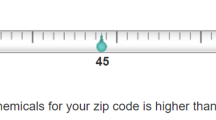Abstract
This paper examines the relationship between environmental pressure groupsand environmental policy makers. Environmental pressure groups are assumedto possess valuable private information on environmental issues.Environmental pressure groups are also assumed to pursue their ownpreferences, which are only partially correlated with policy makers'preferences. A new aspect is that binding contracts with side payments arenot allowed, which accurately describes the interaction betweenenvironmental pressure groups and governments. It is shown that by choosingprobabilities of acting on environmental pressure groups' signals, adecision maker can force environmental pressure groups to reveal superiorinformation even in the absence of binding contracts.
Similar content being viewed by others
References
Becker G. (1983), ‘A Theory of Competition among Pressure Groups for Political Influence’, Quarterly Journal of Economics 98, 371-400.
Burton, P. S. (1994), ‘Land Use Externalities: Mechanism Design for the Allocation of Environmental Resources’, Journal of Environmental Economics and Management 30(2), 174-185.
Cropper, M. L., W. N. Evans, S. J. Berardi, M. M. Ducla-Soares and P. R. Portney (1992), ‘Determinants of Pesticide Regulation: A Statistical Analysis of EPA Decision Making’, Journal of Political Economy 100, 175-197.
Dewatripont, M. and J. Tirole (1999), ‘Advocates’, Journal of Political Economy 107(1), 1-39.
Frey, B. S., F. Oberholzer-Gee and R. Eichenberger (1996), ‘Markets and Morals’, Journal of Political Economy 104(6), 1297-1313.
Fudenberg, D. and J. Tirole (1991), Game Theory. Cambridge, Massachusetts: MIT Press.
Green, J. and J-J. Laffont (1978), ‘An Incentive Compatible Planning Procedure for Public Good Production’, Scandinavian Journal of Economics.
Groves, T. and J. Ledyard (1977), ‘Optimal Allocation of Public Goods, The Solution to the “Free-Rider” Problem’, Econometrica 45, 783-809.
Groves, T. and J. Ledyard (1980), ‘The Existence of Efficient and Incentive Compatible Equilibria with Public Goods’, Econometrica 48, 1487-1506.
Hartle, D. G. (1983), ‘The Theory of “Rent-Seeking”: Some Reflections’, Canadian Journal of Economics 16, 539-554.
Hurley, Terrence M. and J. Shogren (1997), ‘Environmental Conflicts and the SLAPP’, Journal of Environmental Economics and Management 33, 253-273.
Author information
Authors and Affiliations
Rights and permissions
About this article
Cite this article
Nævdal, E., Brazee, R.J. A Guide to Extracting Information from Environmental Pressure Groups. Environmental and Resource Economics 16, 105–119 (2000). https://doi.org/10.1023/A:1008389431896
Issue Date:
DOI: https://doi.org/10.1023/A:1008389431896




